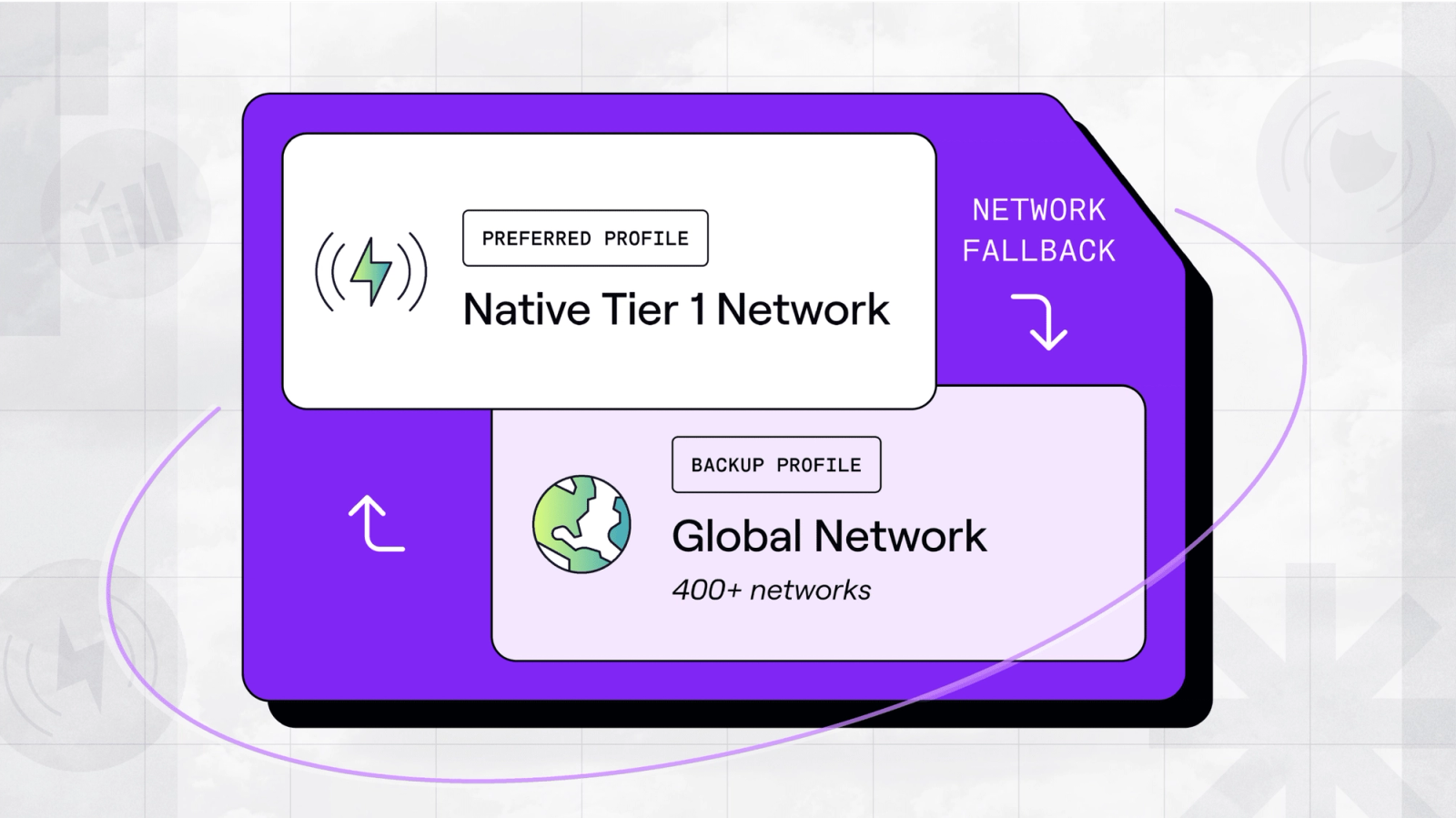Connectivity without compromise – the next-generation of Hyper is here!

Our next-generation Hyper connectivity platform is generally available and ready to deploy
The wait is over. Our next-generation Hyper SIM is now generally available and ready for purchase and deployment worldwide!
We developed Hyper SIM to offer the industry a modern connectivity solution that leverages new technologies to make product creators’ lives simpler, not more complicated. You can learn about Hyper SIM’s exciting new capabilities in more detail here, including its new high-performance network integrations and fully automatic backup connectivity.
Today, rather than talk about features, I want to talk about the headwinds IoT companies are facing and whether the emergence of new connectivity technologies have made deploying cellular products any easier (or not).
Is it just me, or is IoT connectivity getting harder?
The pace of innovation for cellular-connected devices and applications over the last five years has been astonishing. Cellular-connected solutions have disrupted transportation, logistics, healthcare, and are poised to do the same for autonomous vehicles, robotics, and more. Despite these incredible advancements, it continues to feel hard – if not harder than ever – to deploy and manage cellular-connected fleets. How can that be?
New regulatory and commercial restrictions have created challenging gaps in global roaming agreements at the same time that an innovative new wave of IoT devices require higher levels of network performance than most connectivity solutions can deliver. Exciting innovations like eUICC (eSIM) and multi-IMSI have promised to help resolve this fragmentation, but product creators still struggle to juggle solutions from multiple vendors, frequently deal with disruptive outages, and require more flexibility than their existing partners can give them.
The lesson is clear: the industry doesn’t need more technology. It needs simplicity. It needs reliability. It needs flexibility. So we designed the next generation of Hologram’s Hyper SIM to deliver just that.

How Hyper SIM solves connectivity problems
“My cellular connection isn’t fast enough”
From at-home telehealth solutions to autonomous farming equipment, we’re seeing an explosion in the number of innovative new IoT products that push the limits of cellular connectivity. Unfortunately, the majority of these companies have the same problem – their existing cellular solution can’t deliver the network performance these exciting new solutions need. Why is this?
Many existing cellular connectivity solutions (especially “pay up front” and multi-IMSI) are built exclusively on global roaming plans that typically offer limited network performance when compared to direct connections to the same carriers. They work well for low-usage devices that need global reach, but can struggle to support new intensive applications like media streaming and real-time command and control.
The next-generation of Hyper SIM solves this problem by adding a rich new portfolio of direct carrier integrations with leading Tier-1 operators that offer latency and throughput that is 25-75% better than equivalent roaming connections. Whether your next IoT device is transmitting simple sensor data or streaming bidirectional 4K video, Hyper SIM has your current and future connectivity needs covered.
“My devices keep losing connectivity”
One benefit of multi-carrier roaming profiles is that they provide carrier-level resiliency to downtime; if one network is unavailable, you can connect to another one. The problem with these solutions is that they shift the single point of failure from the tower at the front end of the network to the connectivity provider's mobile core or network integration at the back end. In this new location, issues can be equally frequent and even more disruptive.
To truly solve the reliability problem that most connectivity solutions face, devices need route redundancy, not just network redundancy. They need multiple paths to the same carriers, not just more carriers.
Our next-generation Hyper SIM delivers the most reliable connectivity experience by hosting multiple connectivity profiles, each with a fully independent networking route, on a single SIM card. Hyper’s customizable network fallback layer ensures that even SIMs that are physically inaccessible and disconnected can identify an alternate route to get back online in minutes, not hours or days.
“I need to customize connectivity for a specific device or geography”
The real world is messy, and most companies eventually discover that the connectivity solution that works best for the majority of their fleet isn’t the best choice for the entirety of their fleet.
In theory, this is a primary benefit of eUICC – that companies can remotely change the cellular configuration for any SIM to optimize its connection. In practice, we see that most connectivity providers think of remote profile changes as a tool of last resort to prevent physical SIM swaps, a fire alarm “for emergency use only.” As a result, the majority of OEMs are still sourcing multiple SIMs with different network footprints from multiple providers to bridge the gap.
By contrast, Hologram’s Hyper SIM is eUICC-native. Except by specific customer request, we no longer ship traditional SIM cards. With today’s launch, each and every network solution that we offer is available on our next-generation Hyper platform. They can be mixed, matched, and integrated with network fallback to create a truly customized connectivity solution that’s tailored to the unique needs of your individual devices, your product, and your business.
A new chapter in cellular IoT
For the last year, we’ve been excitedly building towards a new chapter in cellular IoT – one of “connectivity without compromise.” With today’s announcement and the general availability of Hologram’s next-generation Hyper SIM, that chapter has finally begun!
Interested in connecting your new or existing devices with Hyper?